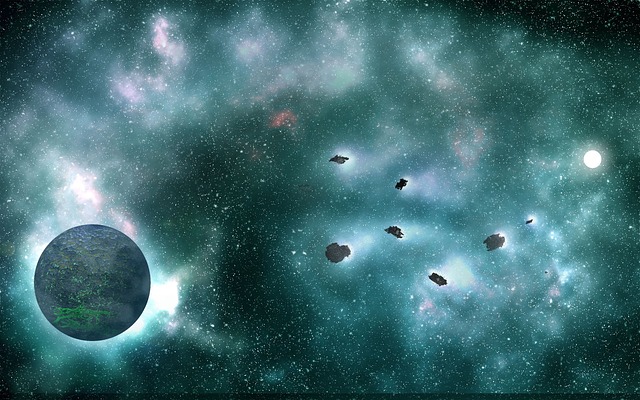Not long ago, the idea of mining in space sounded like something out of a sci-fi novel. But today, it’s a field that scientists and engineers are seriously exploring. Why? Because tucked away in our solar system are countless asteroids – some of them packed with metals, water, and even the building blocks of life.
As research progresses, space mining is becoming more than just a futuristic fantasy. From supporting future space colonies to unlocking new scientific insights, these rocky bodies could become essential to how humanity expands its reach beyond Earth.
So, which asteroids are considered the most promising when it comes to resource potential? Here’s a look at five of the richest ones discovered so far.
1. 16 Psyche – The Metallic Core of a Lost World
Sitting in the asteroid belt between Mars and Jupiter, 16 Psyche stands out as one of the most intriguing objects we’ve found in space. It’s thought to be the exposed metallic core of a planetesimal – a small planet that was shattered during the early days of the solar system.
Measuring about 220 kilometres across, Psyche is believed to be made up largely of iron and nickel, making it one of the most metal-rich bodies ever discovered. Some early estimates placed its hypothetical value in the quadrillions of dollars, although it’s important to note that value is symbolic – mining and transporting metals from space remains a huge challenge.
NASA launched the Psyche mission in 2023, with a spacecraft expected to arrive by 2029. Its goal is to closely study the asteroid’s surface, composition, and magnetic properties. Not only could this reveal insights into how terrestrial planets formed, but it may also help shape the future of asteroid mining by showing us what a metallic body looks like up close.
2. 1986 DA – A Metal-Rich Target Close to Earth
While Psyche is far away in the asteroid belt, 1986 DA is a bit closer to home – and potentially just as valuable. This near-Earth asteroid, over a mile wide, has been estimated to contain more iron, nickel, and cobalt than all known reserves on Earth. Some scientists suggest it could be worth around $11.65 trillion in raw metals.
What makes 1986 DA especially interesting is that it’s thought to be composed of 85% metal and only 15% silicate rock. That’s a remarkably high metal content for an asteroid. These characteristics make it a strong candidate for future mining missions, especially since its orbit brings it relatively close to Earth.
Researchers believe that studying asteroids like 1986 DA could help us better understand more distant targets like Psyche. They’re sometimes referred to as “mini Psyches” due to their similar composition, and their proximity makes them easier to study using Earth-based telescopes.
3. Bennu – A Small Rock with Big Scientific Value
Bennu is a small near-Earth asteroid – just about 500 metres in diameter – but it’s one of the most studied and scientifically valuable objects of its kind. Unlike the metal-rich asteroids mentioned above, Bennu is a carbonaceous asteroid, which means it’s packed with organic compounds and water-bearing minerals.
NASA’s OSIRIS-REx mission explored Bennu between 2018 and 2021, even collecting samples that were brought back to Earth in 2023. These samples revealed clay minerals that had interacted with water, confirming that Bennu’s parent body once hosted liquid water.
The presence of hydrated minerals and complex organic molecules makes Bennu a key object of interest – not just for planetary science, but also for future space mining. These kinds of materials could be used to support long-term missions by providing water, oxygen, or even fuel in space.
4. Ryugu – Organics, Water, and a Surprise Discovery
Ryugu is another carbon-rich asteroid, slightly larger than Bennu, and located in a near-Earth orbit. Studied by Japan’s Hayabusa2 mission from 2018 to 2019, Ryugu revealed an extraordinary mix of organics and hydrated minerals. But perhaps the most surprising discovery came after the samples returned to Earth: scientists found a tiny droplet of liquid saltwater.
This tiny inclusion – essentially a preserved micro-environment – offers direct evidence that Ryugu once held water in a liquid state. Along with the organic materials found in its samples, this strengthens the theory that asteroids like Ryugu may have helped deliver the ingredients for life to early Earth.
From a resource perspective, Ryugu is an important example of an asteroid that could support space missions through in-situ resource utilisation (ISRU). Extracting water and other volatiles from such asteroids could reduce our dependence on Earth-based supply chains.
5. Ceres – The Salty, Icy Dwarf Planet
Ceres may be classified as a dwarf planet, but it’s also the largest object in the asteroid belt and a fascinating candidate for resource exploration. It’s rich in water ice, carbonates, and possibly even organic compounds. Some of its surface features, like the bright spots in Occator Crater, are believed to be salt deposits from briny water that once reached the surface.
NASA’s Dawn mission orbited Ceres from 2015 to 2018 and uncovered strong evidence of cryovolcanic activity – basically ice volcanoes – that suggest there may still be liquid beneath the surface. While Ceres isn’t as rich in metal as Psyche or 1986 DA, its water content makes it a valuable candidate for long-term exploration or potential colonisation efforts.
Water ice from bodies like Ceres could one day be harvested to produce drinking water, breathable air, and hydrogen-based fuel for spacecraft – key resources for any extended human presence in space.
A Glimpse into the Future
These five asteroids – ranging from metal giants to organic-rich time capsules – represent the incredible variety of resources floating in our solar system. The goal is to fuel deep-space missions, support off-Earth colonies, or simply learn more about how planets form; the potential of these space rocks is enormous.
True, the science behind space mining is still developing, and many technical and ethical questions remain. But one thing is clear: as we look beyond Earth, asteroids are quickly becoming more than just cosmic debris. They could be the key to humanity’s next giant scientific leap.







Recent Comments